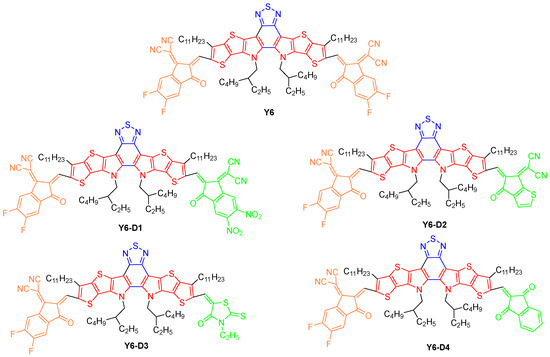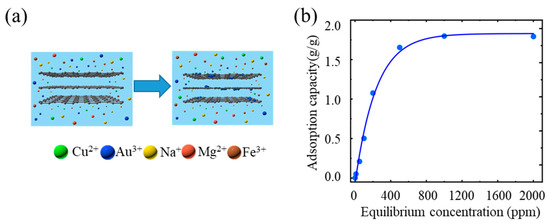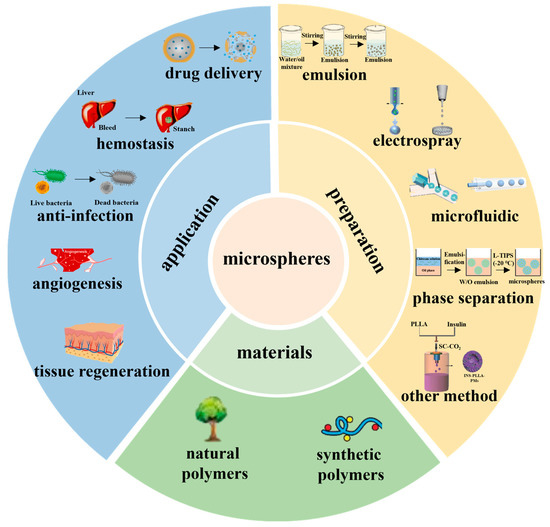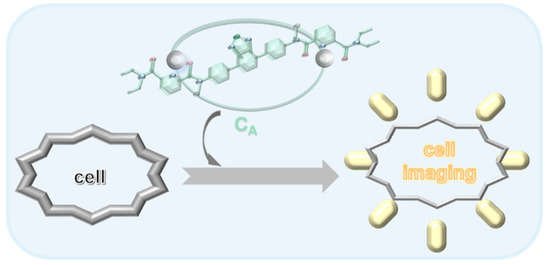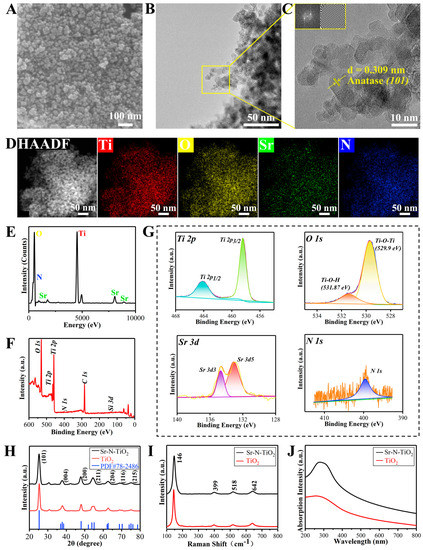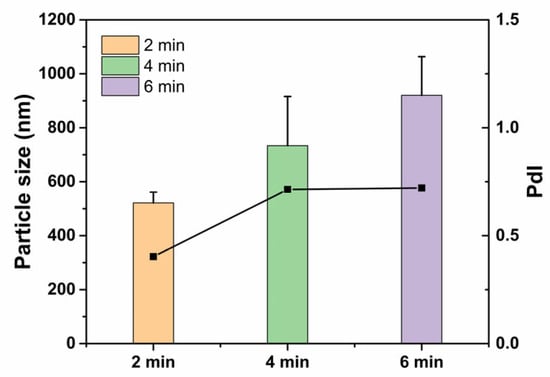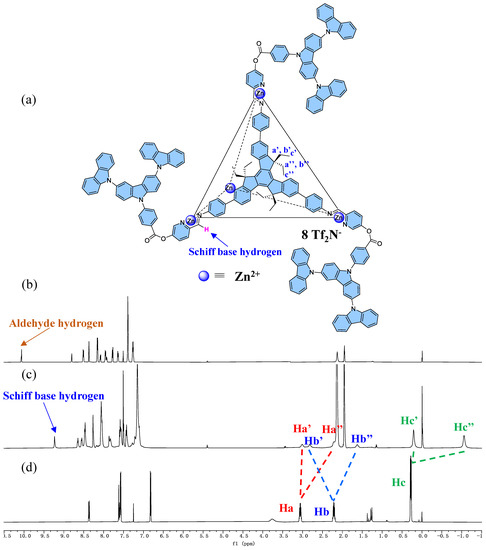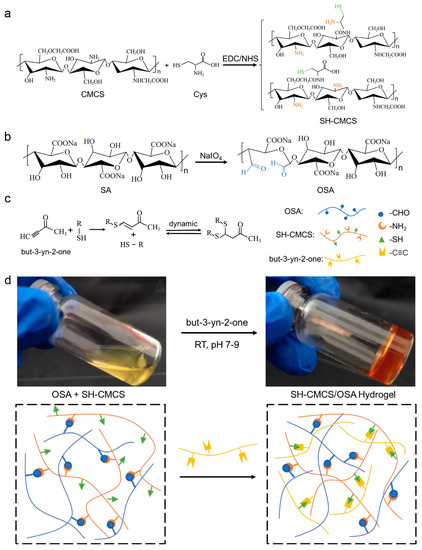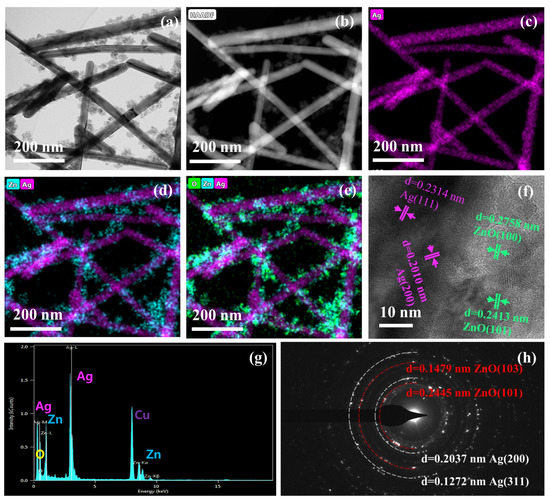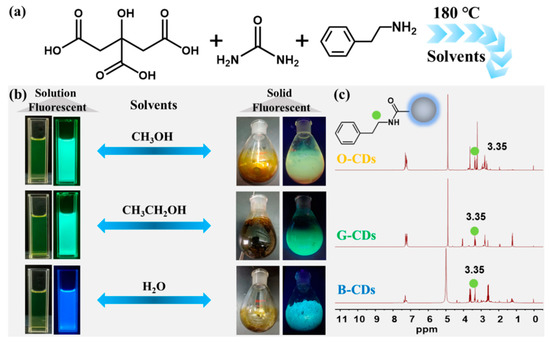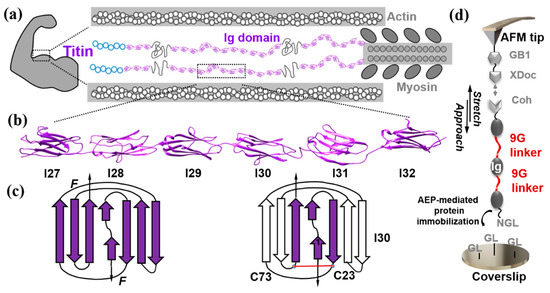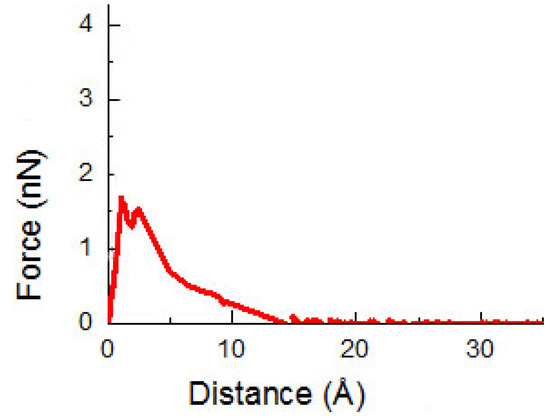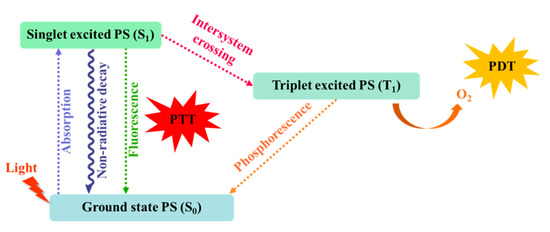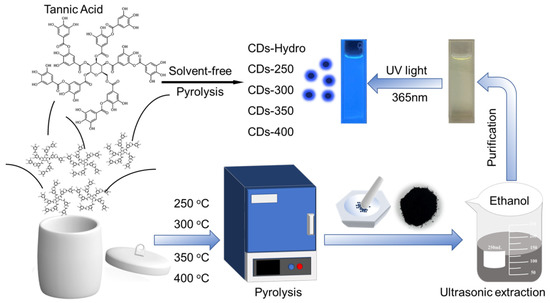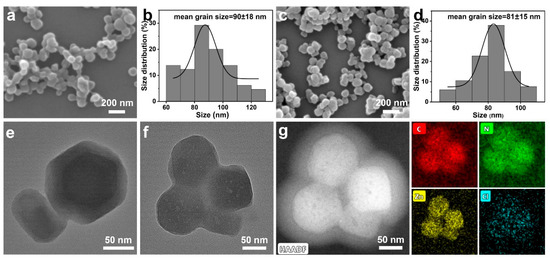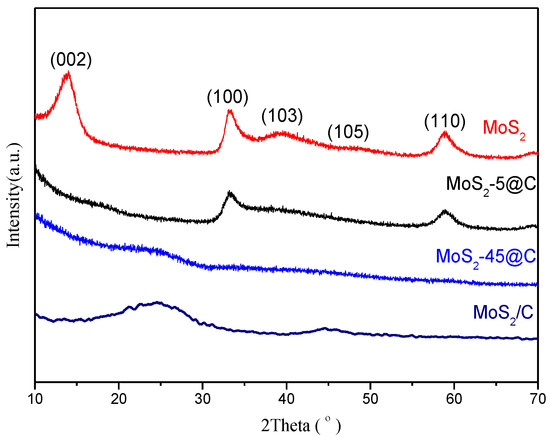<p>Challenges for neural interfaces and common 2D nanomaterials for the applications.</p> Full article ">Figure 2
<p>Mechanical mismatch between neural tissue and artificial implanted electrodes.</p> Full article ">Figure 3
<p>(<b>A</b>) (i) Schematic of mask-assisted filtration for microelectrode fabrication. (ii, iii) Photographs of MGHbased cuff microelectrodes and planar microelectrode arrays. The scale bars in (A–ii) and (iii) are 800 and 500 µm, respectively. (iv) Cyclic voltammetry measurements of MGH (red), d-MGH (green), and Pt (blue) microelectrodes measured at a scan rate of 10 mV s<sup>−1</sup>. (v) Current densities of MGH, d-MGH, and Pt microelectrode measured at 500 Hz frequency, ±0.5 V bipolar pulses. (vi) Bode plots for the impedance of MGH, d-MGH, and Pt microelectrodes. The electrolyte is PBS. Reprinted with permission from [<a href="#B71-ijms-25-08615" class="html-bibr">71</a>] Copyright © 2022, Wiley. (<b>B</b>) (i) No difference was observed in the number of neurons (labeled with NeuN, a neuronal molecular marker) between implanted (gray) and control (white) hemispheres of awake animals (scale bar = 100 μm). (ii) No difference was observed in the number of glia (labeled with GFAP, a glia molecular marker) between implanted (gray) and control (white) hemispheres of the awake animals (scale bar = 20 μm). The arrows indicate glia limitans, the index for brain inflammation. Data are expressed as the mean ± SEM. n.s. not significant. Reprinted with permission from [<a href="#B80-ijms-25-08615" class="html-bibr">80</a>] Copyright © 2022 Springer Nature. (<b>C</b>) (i) Schematic illustrating the design of CeG_MEAs for neural interfacing. (ii, iii) TEM images of the CeG film. Scale bars: 500 nm in (ii) and 50 nm in (iii). (iv) SEM images of a PtNPs-coated CeG nanofilm conformally spreading on a rose petal replica with tightly packed micropapillae and nanowrinkles. Scale bar: 2 μm. Inset scale bar: 500 nm. (v) SEM image of a 50 nm-thick gold film floating on a rose petal replica. Scale bar: 5 μm. (vi) Relative resistance changes of a CeG film and a 50 nm-thick gold film under the tensile strain from 0 to 20%. Reprinted with permission from [<a href="#B20-ijms-25-08615" class="html-bibr">20</a>] Copyright © 2023 American Chemical Society. (<b>D</b>) (i) Process of GO fiber preparation, GF-Pt microelectrode fabrication, and intracortical implantation. (ii) CVs of the microelectrodes at 10 mV s<sup>−1</sup> in PBS solution. (iii) Modulus of impedance of microelectrodes. Reprinted with permission from [<a href="#B81-ijms-25-08615" class="html-bibr">81</a>] Copyright © 2019, Wiley. (<b>E</b>) (i) A schematic drawing of the DBS–fMRI study using GF bipolar microelectrodes. (ii) A representative SEM image of the axial external surface of a GF fiber. Inset, magnified image of the region in the dashed box. Scale bar, 20 μm; inset, 5 μm. (iii) The picture of a GF bipolar microelectrode assembly. Inset, SEM image of the GF bipolar microelectrode tip, showing two GFs (bright core) with each one insulated with Parylene-C film (dark shell). Scale bar, 1 cm; inset, 100 μm. (iv) Representative coronal (left) and horizontal (right) sections of the T2 MRI images of rat brains implanted with a GF bipolar microelectrode. Reprinted with permission from [<a href="#B22-ijms-25-08615" class="html-bibr">22</a>] Copyright © 2022 Springer Nature. (<b>F</b>) Normalized power spectrum of the recorded signal from Au and graphene electrodes (zoomed-in) after shining light with 10 Hz frequency. Reprinted with permission from [<a href="#B38-ijms-25-08615" class="html-bibr">38</a>] Copyright © 2022 Springer Nature.</p> Full article ">Figure 3 Cont.
<p>(<b>A</b>) (i) Schematic of mask-assisted filtration for microelectrode fabrication. (ii, iii) Photographs of MGHbased cuff microelectrodes and planar microelectrode arrays. The scale bars in (A–ii) and (iii) are 800 and 500 µm, respectively. (iv) Cyclic voltammetry measurements of MGH (red), d-MGH (green), and Pt (blue) microelectrodes measured at a scan rate of 10 mV s<sup>−1</sup>. (v) Current densities of MGH, d-MGH, and Pt microelectrode measured at 500 Hz frequency, ±0.5 V bipolar pulses. (vi) Bode plots for the impedance of MGH, d-MGH, and Pt microelectrodes. The electrolyte is PBS. Reprinted with permission from [<a href="#B71-ijms-25-08615" class="html-bibr">71</a>] Copyright © 2022, Wiley. (<b>B</b>) (i) No difference was observed in the number of neurons (labeled with NeuN, a neuronal molecular marker) between implanted (gray) and control (white) hemispheres of awake animals (scale bar = 100 μm). (ii) No difference was observed in the number of glia (labeled with GFAP, a glia molecular marker) between implanted (gray) and control (white) hemispheres of the awake animals (scale bar = 20 μm). The arrows indicate glia limitans, the index for brain inflammation. Data are expressed as the mean ± SEM. n.s. not significant. Reprinted with permission from [<a href="#B80-ijms-25-08615" class="html-bibr">80</a>] Copyright © 2022 Springer Nature. (<b>C</b>) (i) Schematic illustrating the design of CeG_MEAs for neural interfacing. (ii, iii) TEM images of the CeG film. Scale bars: 500 nm in (ii) and 50 nm in (iii). (iv) SEM images of a PtNPs-coated CeG nanofilm conformally spreading on a rose petal replica with tightly packed micropapillae and nanowrinkles. Scale bar: 2 μm. Inset scale bar: 500 nm. (v) SEM image of a 50 nm-thick gold film floating on a rose petal replica. Scale bar: 5 μm. (vi) Relative resistance changes of a CeG film and a 50 nm-thick gold film under the tensile strain from 0 to 20%. Reprinted with permission from [<a href="#B20-ijms-25-08615" class="html-bibr">20</a>] Copyright © 2023 American Chemical Society. (<b>D</b>) (i) Process of GO fiber preparation, GF-Pt microelectrode fabrication, and intracortical implantation. (ii) CVs of the microelectrodes at 10 mV s<sup>−1</sup> in PBS solution. (iii) Modulus of impedance of microelectrodes. Reprinted with permission from [<a href="#B81-ijms-25-08615" class="html-bibr">81</a>] Copyright © 2019, Wiley. (<b>E</b>) (i) A schematic drawing of the DBS–fMRI study using GF bipolar microelectrodes. (ii) A representative SEM image of the axial external surface of a GF fiber. Inset, magnified image of the region in the dashed box. Scale bar, 20 μm; inset, 5 μm. (iii) The picture of a GF bipolar microelectrode assembly. Inset, SEM image of the GF bipolar microelectrode tip, showing two GFs (bright core) with each one insulated with Parylene-C film (dark shell). Scale bar, 1 cm; inset, 100 μm. (iv) Representative coronal (left) and horizontal (right) sections of the T2 MRI images of rat brains implanted with a GF bipolar microelectrode. Reprinted with permission from [<a href="#B22-ijms-25-08615" class="html-bibr">22</a>] Copyright © 2022 Springer Nature. (<b>F</b>) Normalized power spectrum of the recorded signal from Au and graphene electrodes (zoomed-in) after shining light with 10 Hz frequency. Reprinted with permission from [<a href="#B38-ijms-25-08615" class="html-bibr">38</a>] Copyright © 2022 Springer Nature.</p> Full article ">Figure 4
<p>(<b>A</b>) Atomic structure of black phosphorus. Reprinted with permission from [<a href="#B84-ijms-25-08615" class="html-bibr">84</a>] Copyright © 2014, Springer Nature Limited. (<b>B</b>) Schematic representation of BP flake-enabled neuromodulation for suppressing electrical signals in epilepsy. Reprinted with permission from [<a href="#B89-ijms-25-08615" class="html-bibr">89</a>] Copyright © 2024, American Chemical Society. (<b>C</b>) In vivo neural stimulation using BP–PEG nanosheets. (i) Schematic of BP-based neural stimulation and extracellular recording in brains of anesthetized animals. (ii) Representative recordings of spiking activities in cells in response to pulses of NIR light with/without BP–PEG nanosheets. Reprinted with permission from [<a href="#B90-ijms-25-08615" class="html-bibr">90</a>] Copyright © 2021 Wiley. (<b>D</b>) Wet adhesion of CPB. With a strong swelling capacity when adhered to wet tissues, the interfacial water can be reduced or even removed. The interaction between the patch and the tissue is not affected by water molecules and finally results in stronger adhesion of CPB. Reprinted with permission from [<a href="#B91-ijms-25-08615" class="html-bibr">91</a>] Copyright © 2024, The Author(s). (<b>E</b>) A schematic overview of the development and use of the Lf-BP-Pae nano-platform for the treatment of PD. Reprinted with permission from [<a href="#B23-ijms-25-08615" class="html-bibr">23</a>] Copyright © 2020 Elsevier Ltd. All rights reserved. (<b>F</b>) BP-MB@Gel application for improving AD pathology. (i) The preparation of BP-MB@Gel. (ii) Schematic illustration of the IN administration of BP-MB@Gel. Reprinted with permission from [<a href="#B92-ijms-25-08615" class="html-bibr">92</a>] Copyright © 2024 Wiley. (<b>G</b>) A schematic overview of the development and use of the BP-RVG29@HYP nano-platform for the treatment of depression. Reprinted with permission from [<a href="#B93-ijms-25-08615" class="html-bibr">93</a>] Copyright © 2024 Wiley. (<b>H</b>) Schemes of concentrically integrative layer-by-layer bioassembly (CI-LBLB) of a BP/polycaprolactone (PCL) nanoscaffold. Reprinted with permission from [<a href="#B94-ijms-25-08615" class="html-bibr">94</a>] Copyright © 2019, American Chemical Society.</p> Full article ">Figure 5
<p>(<b>A</b>) (i) CV profiles of bare SPCE, SPCE/HBN, and SPCE/HBN-PDA at 1.5 mg/mL nanocomposite concentration, (ii) DPV profiles of bare SPCE, SPCE/HBN, and SPCE/HBN-PDA modified SPCEs at 1.5 mg/mL nanocomposite concentration, (iii) DPV profiles of SPCE/HBN-PDA using various concentrations of HBN-PDA, (all measurements were carried out in in 10 mM pH 7.4 PBS contained 5.0 mM HCF and 0.1 M KCl, scan rate: 50 mV/s). Reprinted with permission from [<a href="#B95-ijms-25-08615" class="html-bibr">95</a>] Copyright © 2023, Elsevier. (<b>B</b>) (i) Schematic illustration of NeuroWeb on the mouse brain surface. NeuroWeb consists of the active region, supporting region, and metal interconnects. The detected action potentials using NeuroWeb are sent to an external interface via I/O pads. (ii) Close-up view of the black dashed box in (ii), which consists of the Pt recording electrode (gray), Au joint (yellow), Gr line (black), top and bottom h-BN insulating layers (green), and SU-8 (light blue). Reprinted with permission from [<a href="#B96-ijms-25-08615" class="html-bibr">96</a>] Copyright © 2023, PubMed Central.</p> Full article ">Figure 6
<p>(<b>A</b>) M3(HHTP)2 in the form of (i) hydrothermally grown and drop-casted MOF and (iv) MOFs obtained by epitaxial growth and Langmuir–Blodgett deposition with their anticipated orientation on the electrode surface. Scanning electron micrographs of (ii) nanorods and (v) nanosheets. Idealized models of exposed crystal facets belonging to the Bragg family of planes (iii) {100} or (vi) {001} were generated from reported crystal structures (blue: metal (Ni or Co), gray: carbon, red: oxygen, and white: hydrogen). (vii) A representative hexagonal nanocrystal with overlaid families of planes. Reprinted with permission from [<a href="#B33-ijms-25-08615" class="html-bibr">33</a>] Copyright © 2023, American Chemical Society. (<b>B</b>) Schematic illustration of the antibiofouling mechanism of cCFE. Reprinted with permission from [<a href="#B100-ijms-25-08615" class="html-bibr">100</a>] Copyright © 2022, American Chemical Society.</p> Full article ">Figure 7
<p>(<b>A</b>) Schematic representation of the structure of MXenes with <span class="html-italic">n</span> = 1–4 and some examples. Reprinted with permission from [<a href="#B104-ijms-25-08615" class="html-bibr">104</a>] Copyright © 2021, The American Association for the Advancement of Science. (<b>B</b>) Synthesis, characterization, and application of Ti3C2 for neural recording. (i) Schematics illustrating synthesis and atomic structure of Ti3C2, fabrication of Ti3C2 neural microelectrode arrays, and application of Ti3C2 arrays for recording brain activity at different locations in the rat brain. (ii) Ti3C2/Au intracortical electrode array. Reprinted with permission from [<a href="#B106-ijms-25-08615" class="html-bibr">106</a>] Copyright © 2018, American Chemical Society. (<b>C</b>) Design and preparation of a highly stable, transparent, and conductive MP film. (i) Schematic illustration of the chemical structure of MP film (MXene film crosslinked by PEDOT: PSS). (ii) Multimodal cognitive monitoring by MPET. Reprinted with permission from [<a href="#B21-ijms-25-08615" class="html-bibr">21</a>] Copyright © 2023, Wile. (<b>D</b>) Schematic of a biosensing device based on MXene field-effect transistors. Reprinted with permission from [<a href="#B108-ijms-25-08615" class="html-bibr">108</a>] Copyright © 2016, Wiley. (<b>E</b>) Jet-injected neural interface promoted the recovery of motor and sensory nerves in peripheral nerve injury and drove the vagal–adrenal anti-inflammatory axis with low-intensity ES in awake mice. Reprinted with permission from [<a href="#B111-ijms-25-08615" class="html-bibr">111</a>] Copyright © 2023, PNAS.</p> Full article ">Figure 7 Cont.
<p>(<b>A</b>) Schematic representation of the structure of MXenes with <span class="html-italic">n</span> = 1–4 and some examples. Reprinted with permission from [<a href="#B104-ijms-25-08615" class="html-bibr">104</a>] Copyright © 2021, The American Association for the Advancement of Science. (<b>B</b>) Synthesis, characterization, and application of Ti3C2 for neural recording. (i) Schematics illustrating synthesis and atomic structure of Ti3C2, fabrication of Ti3C2 neural microelectrode arrays, and application of Ti3C2 arrays for recording brain activity at different locations in the rat brain. (ii) Ti3C2/Au intracortical electrode array. Reprinted with permission from [<a href="#B106-ijms-25-08615" class="html-bibr">106</a>] Copyright © 2018, American Chemical Society. (<b>C</b>) Design and preparation of a highly stable, transparent, and conductive MP film. (i) Schematic illustration of the chemical structure of MP film (MXene film crosslinked by PEDOT: PSS). (ii) Multimodal cognitive monitoring by MPET. Reprinted with permission from [<a href="#B21-ijms-25-08615" class="html-bibr">21</a>] Copyright © 2023, Wile. (<b>D</b>) Schematic of a biosensing device based on MXene field-effect transistors. Reprinted with permission from [<a href="#B108-ijms-25-08615" class="html-bibr">108</a>] Copyright © 2016, Wiley. (<b>E</b>) Jet-injected neural interface promoted the recovery of motor and sensory nerves in peripheral nerve injury and drove the vagal–adrenal anti-inflammatory axis with low-intensity ES in awake mice. Reprinted with permission from [<a href="#B111-ijms-25-08615" class="html-bibr">111</a>] Copyright © 2023, PNAS.</p> Full article ">Figure 8
<p>(<b>A</b>) Atomic structure of single layers of transition metal dichalcogenides (TMDCs) in their trigonal prismatic (2H), distorted octahedral (1T), and dimerized (1T′) phases. Reprinted with permission from [<a href="#B113-ijms-25-08615" class="html-bibr">113</a>] Copyright © 2017, Springer Nature. (<b>B</b>) (i) Schematic illustration of the high-density CurvIS array based on the MoS2-graphene heterostructure. (ii) Optical camera image of the high-density CurvIS array. Inset shows the image (i.e., university logo) captured by the CurvIS array. (iii) Schematic illustration of the device design. Inset shows an optical microscope image of a single phototransistor. (iv) Cross-sectional transmission electron microscope image of the MoS2-graphene phototransistor (left) and the magnified image of the MoS2-graphene heterostructure (right). (v) Optical (left) and magnified scanning electron microscope (right) image of the high-density CurvIS array on the concave hemisphere. Reprinted with permission from [<a href="#B37-ijms-25-08615" class="html-bibr">37</a>] Copyright © 2017, Springer Nature. (<b>C</b>) Schematic illustration of a biodegradable, implantable electrochemical brain-integrated system for investigating neurotransmitters with associated variations in pH, temperature, and EP signals. Reprinted with permission from [<a href="#B119-ijms-25-08615" class="html-bibr">119</a>] Copyright © 2022, John Wiley and Sons. (<b>D</b>) Schematic of PEDOT/MoS2 coated micro electrode array. Reprinted with permission from [<a href="#B120-ijms-25-08615" class="html-bibr">120</a>] Copyright © 2020, Springer Nature. (<b>E</b>) Schematic overview of Kapton-based Pt-TMD tattoo design and fabrication flow. (i) Evaporation of thin Pt on top of the Kapton film, followed by TAC conversion into Pt-TMD. (ii) Schematic of the TAC CVD process. (iii) Post-CVD growth, the Pt-TMD/Kapton sample is fixed on top of a TRT. (iv) Mechanical patterning process of the Pt-TMDs grown on Kapton film. (v) Schematics of the final PtSe2 and PtTe2 tattoos supported by Kapton. Reprinted with permission from [<a href="#B121-ijms-25-08615" class="html-bibr">121</a>] Copyright © 2021, American Chemical Society. (<b>F</b>) (i) The structure of human skin. (ii) Schematic of a skin-gate VDWTF transistor with Au source and drain electrodes and an iron rod gate electrode held by a human subject. (iii) Photograph of the freestanding VDWTF on a replica of human skin (left) and the VDWTF supported by a 1.6 μm-thick polyimide substrate on a replica of human skin (right). (iv–vii) Height profiles corresponding to the line scan in different areas of (iii). Reprinted with permission from [<a href="#B122-ijms-25-08615" class="html-bibr">122</a>] Copyright © 2022, The American Association for the Advancement of Science.</p> Full article ">

